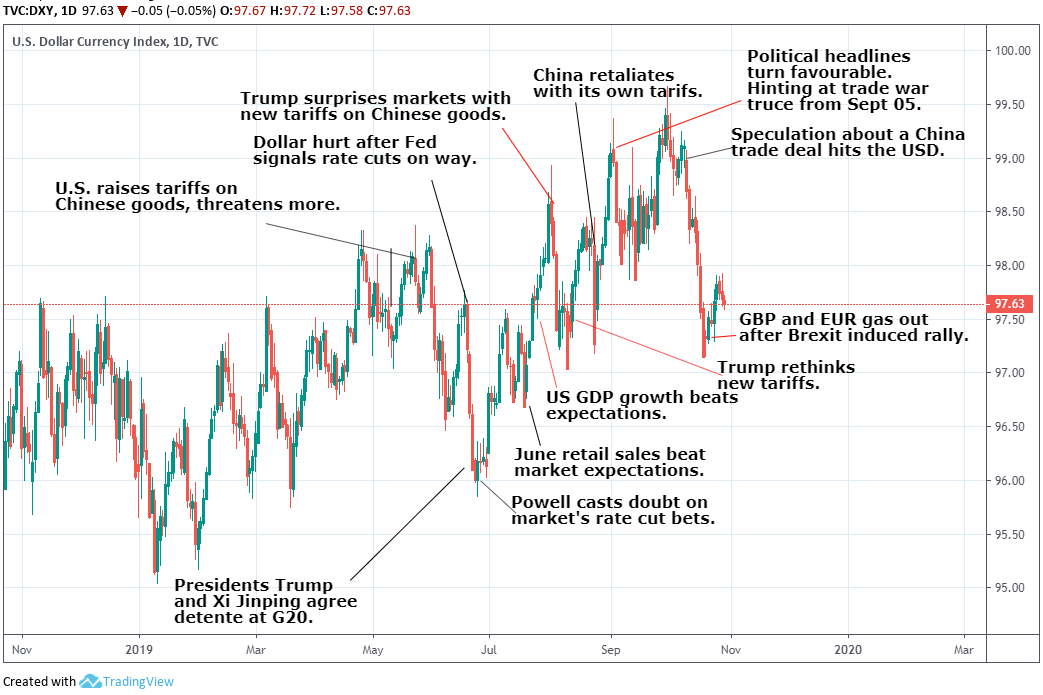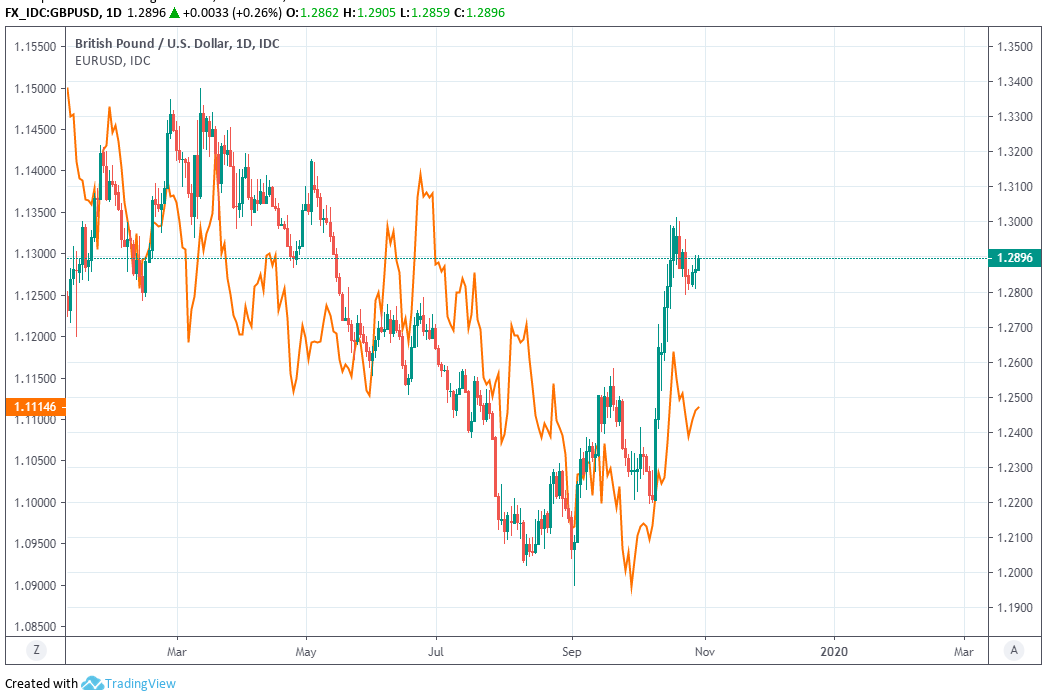U.S. GDP Beats Expectations thanks to the Robust Consumer
- Written by: James Skinner

Image © Adobe Images
- GDP beats estimates
- The consumer keeps the economy ticking
- Could pause Fed's rate cutting cycle
- Dollar awaits Fed guidance
U.S. economic growth statistics came out ahead of expectation when released on Thursday, October 30, thanks to the resilience of the U.S. consumer, leading some analysts to suggest the economy is strong enough to cast doubt on a Federal Reserve interest rate cut being delivered in December.
Quarterly GDP for the third quarter read at 1.9%, just below the previous quarter's 2.0% reading but above the consensus estimate for a reading of 1.6% to be delivered.
Driving the expansion was strong personal consumption, residential fixed investment and government spending.
"The reason why GDP growth held up in 3Q19 is entirely explained by the resilience of personal consumption. It rose a strong 2.9% annualized in 3Q19 (contributing 1.93pp to GDP growth)," says Daniel Vernazza, Chief International Economist at UniCredit Bank. "The resilience of personal consumption is explained by strong growth of real disposable personal income, up 2.9% in 3Q19, compared to a rise of 2.4% in 2Q19."
Vernazza notes fiscal stimulus - i.e. government spending - is still providing a boon to GDP growth, with government consumption increasing a solid 2.0%, thereby contributing 0.35pp to GDP growth.
The release of the data comes ahead of the U.S. Federal Reserve's October policy meeting, where it is expected another interest rate cut will be delivered.
While the data might be too late to impact on the decision, UniCredit say there is a possibility the figures prompt the Fed to pause their rate cutting cycle.
"The Fed is likely to interpret the 3Q19 GDP report as evidence that the economy is in a “good place” and that Fed rate cuts are “insurance” against significant downside risks. It is highly unlikely to stop the Fed from cutting rates by 25bp later today, which is widely priced in by markets, but the GDP report does argue for a pause in December, in line with our forecast," says Vernazza.
The GDP data appears to have little significant impact on the value of the Dollar, which is perhaps understandable given market focus will be on the Fed's upcoming guidance on the future of interest rate policy.

Above: Dollar index shown at daily intervals.
The Fed is widely expected to announce its third 2019 rate cut on Wednesday at 18:00 London time, which will take the Fed Funds rate down to 1.75%. Investors are betting heavily the Fed will cut rates twice more within the next nine months, with a weighty probability of a December 2019 rate cut also baked into the overnight-index-swap market. The market-implied Fed funds rate was just 1.59% Wednesday, suggesting investors think a cut is a certainty.
Analysts have warned that there's a risk the Fed signals again to markets that it might wait for an extended period before cutting rates again, which would risk fuelling an upward turn in the Dollar. However, Vice Chairman Richard Clarida said nearly two weeks ago, before the 'blackout' period that bars such comments, the Federal Open Market Committee will continue to make decisions on a meeting-by-meeting basis.
That could mean the Fed signals neither a pause on Wednesday, nor gives any meaningful clues about the prospect further rate cuts in the months ahead. It's not clear what that would mean for the Dollar although the greenback has tended to rise in the wake of recent policy announcements from the Fed.
"EUR/USD failed to break the 1.1125-30 area again despite some good buying on our side - it ran into US names on the offer all the way down to the overnight lows. This feels fairly transactional ahead of US economic data and the FOMC later on Wednesday," says Thomas Laubscher, a spot FX trader at UBS.

Time to move your money? Get 3-5% more currency than your bank would offer by using the services of a specialist foreign exchange specialist. A payments provider can deliver you an exchange rate closer to the real market rate than your bank would, thereby saving you substantial quantities of currency. Find out more here.
* Advertisement




